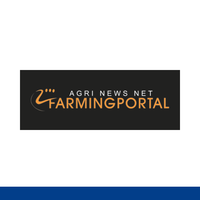How load-shedding hits your food - Farming Portal
Terence Corrigan
It’s often necessary to remind ourselves of a truism, just because we often don’t have to think about it. One of the more obvious is that food does not grow itself.
It is – a point I’ve made before – a wonder of modern society that for most of us, our relationship with food is rarely one of production, or even of availability. Well-stocked food outlets that never run out of supply are a convenience we take for granted, not always recognising them for the civilisational achievements they are.
To be sure, this does not mean that everyone in modern society is properly fed and nourished. This is certainly the case in South Africa, where an uncomfortably large proportion of the population lacks the means reliably to meet their food needs – so-called food poverty.
However, the broad point holds, that modern agriculture is central to modern life. An abundant supply of food is a precondition for a stable and prosperous society. As a country, South Africa is fortunate in having a robust agricultural sector, with plentiful downstream opportunities.
The relatively small contribution made by agriculture to GDP (somewhere under 3%) belies the outsized role it plays in the economy. This is seen not only in the large numbers of rural jobs it creates and rural communities it sustains, but also in the considerable reach and earnings of our agricultural exports. A rough and ready calculation from the Observatory of Economic Complexity puts agricultural and agriculture-related exports – foodstuffs, animals, hides etc – at $10.6 billion, accounting for around a tenth of the value our overall exports.
South African produce and wines are world renowned and fly the country’s brand-flag in many parts of the globe.
South African agriculture is a sector that generally comes through for the country. It did so during the pandemic and was a major driver of the growth that the country experienced last year.
Probably because we are disconnected from the production of our food, we often forget just what it entails. Food production is not the bounty of a benevolent nature as the romantics might claim, nor is it an easy option for economic inclusion as some in the government appear to believe.
Modern agriculture is tough business – business being an apt word since it is about optimising inputs and outputs, rational planning and constant innovation. This is underlined and emphasised by the specific challenges faced by farmers in South Africa: the limitations on the water supply and the additional challenge of climate change, crime and insecurity, and the failure of so much of the country’s infrastructure.
Hitting agriculture hard
So, it’s not surprising that out of the public eye (or much of it), South Africa’s power crisis is hitting agriculture hard. Electricity is essential to any modern enterprise and this includes farms. The Agricultural Business Chamber recently sounded the alarm that the failure of the power supply was a universal concern for the farming economy, and for the businesses that feed off it.
The most obvious example here is the effect on irrigated crops. Around a fifth of maize, a third of sugarcane and a little under half of wheat rely on irrigation systems. Fruits and vegetables may be even more vulnerable.
Farmers who spoke to the Daily Friend pointed out that load-shedding was happening on top of a heat wave. This followed large layouts for fertilisers; money had already been sunk into the operations in the hopes of a corresponding harvest. When electricity outages repeatedly shut down the irrigation systems – a headache in itself, since this can damage the equipment and since these systems need to be manually turned on again – the resultant loss can be catastrophic.
As one farmer put it: ‘That last three-week heat wave we had in the midst of load-shedding was a disaster. Just could not put enough water down. The amusing part was seeing the countryside light up as bakkies were racing around at 1.30am turning on pivots.’
As an aside, the recent floods demonstrate another dimension of the difficulties of farming in South Africa.
Livestock is not immune either. A dairy is now a quasi-industrial plant; monitoring and milking the animals demands electricity. Storing the milk requires electricity. Managing the records and the complex administration of such an enterprise is done – as are the operations of any modern office – on devices that also depend on electricity.
Comparable circumstances exist on poultry farms, piggeries and abattoirs. Large-scale chicken farming, for example, is conducted in structures that require artificial ventilation – something that, again, can’t operate without electricity.
And the consequences of this have been on display in social media videos of farmers dumping spoiled milk, and reports of the asphyxiation of tens of thousands of chickens.
Aljazeera ran a brief but pithy piece on the power crisis and its impact on farming and the agricultural sector in a piece titled Power cuts grinding South Africa’s food sector to a halt. (As this is an international outlet, understand that this is a life-and-death representation of the country transmitted across the world.) The title is evocative, and puts into perspective the severity of what the country is facing.
The consequences of all this will become ever more apparent in rising food price inflation, as farmers struggle to adapt to the dysfunction. Some will simply see their output curtailed; some will have to undertake costly (at least in the short-term) mitigation measures; others will probably be driven to the wall.
For consumers this means – in a phrase – more expensive food. The magnitude of this remains to be seen though all indications are that it is serious. Stats SA records that food price inflation is currently at a 14 year high. Recently, Chris Engelbrecht, chair of the Association of Southern Africa Sugar Importers made a grim forecast: ‘I estimate load-shedding will increase the South African food cost in general by 20% in the next few months.’
Be very concerned about how this ripples through society. A deprived, angry population is not a stable one.
Tragically, in our farming community, we have a major asset that the short-sighted and incompetent management of our power supply is hobbling. Like the country as a whole, the agricultural community will need to grit its teeth for a rough time in the months – probably years – ahead. What can be done? There have been suggestions for exempting agriculture from load-shedding, although the prospects of this are dampened by the practical difficulties of doing so – many agricultural enterprises simply cannot be separated from the surrounding networks.
More promising would be subsidies in one way or another for own generation, through generators (already extensively used, with consummate cost implications) or solar power where feasible.
What South Africa had
None of these are great substitutes for a properly functioning grid and the power it delivers – which is what South Africa had at one point.
South Africa’s farmers face a dreadful conjunction of circumstances and misfortunes, whose effects hit us all. Spare a thought for them and their predicament when watching your groceries go through the supermarket till.
For those in authority, the threat to the agricultural sector should be a matter of profound concern. This might be an opportunity to wrest thinking on the official approach from one of indifference-cum-hostility – sabre-rattling about expropriation without expropriation, for example – to acknowledging just what a valuable part of the economy it is. Though, as with resolving the power crisis, I wouldn’t hold my breath.
Terence Corrigan is the project manager at the Institute of Race Relations
This article was first published on the Daily Friend.

